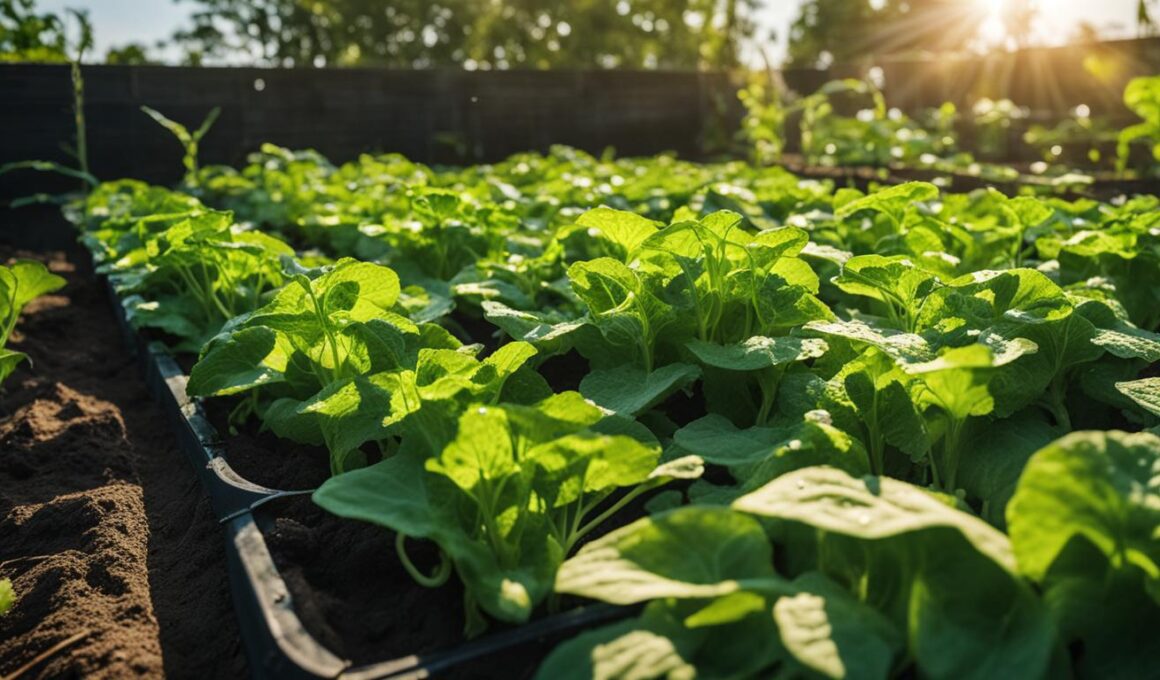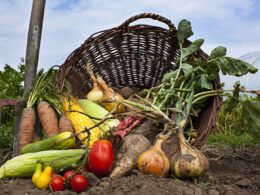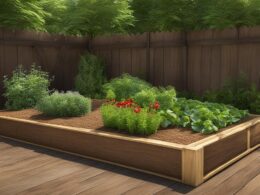Welcome to our gardening tips article on companion planting! If you’re looking to maximize your garden space and enhance your harvest, learning how to grow cucumber and radish together is a great place to start. Companion planting is a technique that involves strategically pairing plants to benefit each other’s growth and ward off pests.
Radishes are not only fast-growing but also excellent companions for a variety of crops, including cucumbers. They repel cucumber beetles and maximize the use of garden space. On the other hand, cucumbers benefit from companions like radishes, which provide support, shade, and nitrogen fixation.
In this article, we’ll explore the benefits of companion planting and share some valuable gardening tips to help you successfully grow cucumber and radish together. Let’s get started!
Post Summary:- Companion planting combines plants that provide mutual benefits, such as repelling pests or improving soil health.
- Radishes make excellent companions for cucumbers, as they repel cucumber beetles and maximize garden space.
- Cucumbers benefit from companions like radishes, which provide support, shade, and nitrogen fixation.
- Companion planting reduces the need for pesticides, attracts beneficial pollinators, and improves overall garden health.
- By following companion planting techniques, you can create a thriving garden ecosystem and enhance your harvests.
Companion Plants for Radishes
When it comes to companion planting, radishes are versatile and can be interplanted with a variety of crops. This gardening technique not only maximizes the use of space in your garden but also provides multiple benefits for your radishes and their companion plants.
One of the ideal companion plants for radishes is peas. Peas have a slower growth rate, which allows radishes to develop without any hindrance. Moreover, the nitrogen-fixing abilities of peas can improve the soil quality for both crops. Another great companion for radishes is leaf lettuce. Similar to peas, leaf lettuce grows slowly, providing enough space for radishes to thrive.
In addition, radishes can be intercropped with tomatoes, peppers, and cucumbers. These crops have longer growing seasons and can tolerate the shade created by radishes. By intercropping, you can make the most efficient use of your garden space and enjoy a diverse harvest.
“Companion planting maximizes the use of garden space and harnesses the repellent properties of radishes.”
For gardeners looking to ward off pests, planting radishes alongside strong-smelling herbs like onions, nasturtium, and members of the allium family can be beneficial. These herbs act as natural repellents, helping to deter pests that may damage your radishes and other crops.
However, it’s important to note that radishes should not be planted near brassicas or hyssop. These plants can hinder the growth of radishes, so it’s best to keep them separate in your garden.
Companion Plants for Radishes
| Crop | Ideal Companion |
|---|---|
| Peas | Radishes |
| Leaf Lettuce | Radishes |
| Tomatoes | Radishes |
| Peppers | Radishes |
| Cucumbers | Radishes |
| Onions | Radishes |
| Nasturtium | Radishes |
| Allium Family | Radishes |
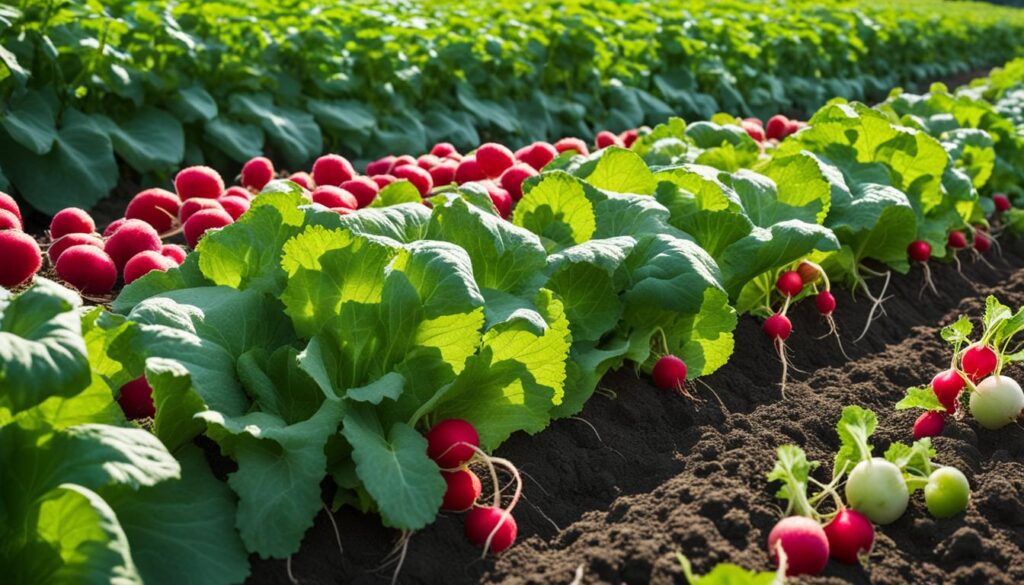
By considering these companion planting techniques, you can create a thriving garden ecosystem that promotes healthy growth and maximizes your harvest. Experiment with different companion plants and see which combinations work best for your radishes and other crops. Happy gardening!
Companion Plants for Cucumbers
Cucumbers, with their long growing season, can greatly benefit from interplanting with other crops. By selecting the right companion plants, you can enhance the growth and productivity of your cucumber plants. Here are some excellent companion plants for cucumbers:
1. Corn
Corn is a great companion for cucumbers as it provides support for their vining growth habit. The tall stalks of corn can act as natural trellises, allowing cucumbers to climb and saving valuable space in your garden. Additionally, corn provides shade for the cucumber plants, helping to keep the soil cool and moist.
2. Beans and Peas
Beans and peas are nitrogen-fixing plants that can benefit cucumbers by enriching the soil with this essential nutrient. Cucumbers are heavy feeders and require a nutrient-rich soil to thrive. By interplanting them with legumes like beans and peas, you can ensure that they have an adequate supply of nitrogen for healthy growth.
3. Radishes
Radishes make excellent companion plants for cucumbers. They not only provide a natural deterrent for cucumber beetles, but they also help to break up compacted soil, allowing the cucumber roots to penetrate deeper. Radishes are quick growers and can be harvested before the cucumber plants take up more space.
4. Quotes
“Companion planting cucumbers with corn, beans, peas, and radishes can help create a thriving garden ecosystem and improve the overall health and productivity of your cucumber plants.” – Gardening expert
| Companion Plants | Benefits |
|---|---|
| Corn | Provides support for vining growth and shade |
| Beans and Peas | Nitrogen fixation and soil enrichment |
| Radishes | Natural deterrent for cucumber beetles and soil aeration |
By interplanting cucumbers with these companion plants, you can create a diverse and beneficial garden environment. Remember to avoid planting cucumbers near potatoes, as they compete for resources and can lead to issues such as potato blight. Additionally, it’s best to steer clear of strong-smelling herbs like sage and mint, as they may affect the flavor of your cucumbers.
Benefits of Companion Planting
Companion planting offers numerous benefits for sustainable gardening and pest control. By carefully selecting and interplanting compatible species, you can create a harmonious and thriving garden ecosystem. Here are some key advantages of companion planting:
- Pest Control: One of the main benefits of companion planting is natural pest control. Certain plants can repel or deter pests, reducing the need for chemical pesticides. For example, planting marigolds alongside tomatoes can help repel aphids and other harmful insects. Similarly, interplanting onions with carrots can help ward off carrot flies. By using companion plants strategically, you can create a more resilient and pest-resistant garden.
- Improved Soil Health: Companion planting can also improve soil health and fertility. Some plants, like legumes, have the ability to fix nitrogen in the soil, enriching it for other plants. For instance, planting beans or peas alongside cucumbers can provide a natural source of nitrogen for the cucumbers to thrive. Similarly, certain plants have deep taproots that help break up compacted soil, allowing for better water and nutrient absorption. By diversifying plant species, you can promote a healthy and balanced soil ecosystem.
- Increased Yield: Companion planting can lead to increased crop yields. When compatible plants are interplanted, they can help maximize space utilization and maximize the use of available resources. For instance, planting radishes alongside cucumbers not only helps deter pests but also allows for efficient use of garden space. Radishes mature quickly and can be harvested before the cucumber plants grow larger. This intercropping technique ensures that the garden space is fully utilized, resulting in a higher overall yield.
- Biodiversity and Pollination: Companion planting promotes biodiversity and attracts beneficial pollinators to the garden. By creating a diverse ecosystem, you can attract a wide range of pollinators, such as bees and butterflies, which are essential for fruit and vegetable production. Additionally, certain companion plants, like borage and lavender, have showy flowers that attract pollinators. By incorporating these plants into your garden, you can ensure efficient pollination and a bountiful harvest.
Overall, companion planting is a sustainable gardening practice that offers a range of benefits. By harnessing natural synergies between plants, you can reduce reliance on chemicals, improve soil health, increase crop yields, and create a vibrant and thriving garden ecosystem.
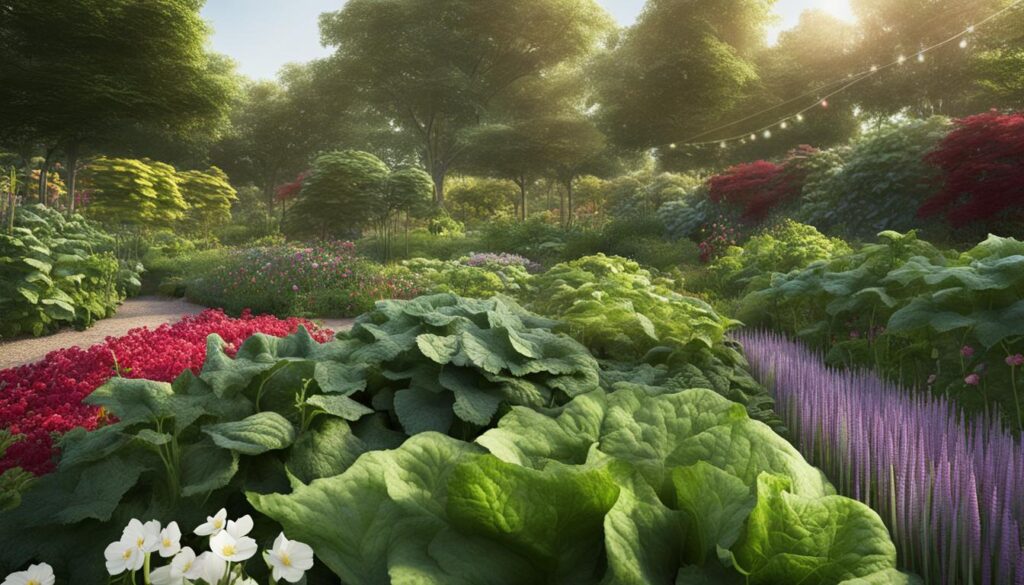
Is it possible to grow cauliflower and radish together in the same garden?
Growing cucumber and cauliflower together in the same garden is not recommended. Cucumbers thrive in warmer temperatures, while cauliflower prefers cooler conditions. Additionally, cucumber plants tend to have sprawling vines that can overshadow and crowd out other vegetables. For successful growth, it is best to provide separate growing areas for these two vegetables.
Conclusion
Growing cucumbers and radishes together can be a rewarding practice in your garden. By implementing companion planting techniques, you can optimize your space, deter pests, and improve the overall health of your soil.
Radishes are excellent companions for a variety of crops, including peas, lettuce, tomatoes, peppers, and cucumbers. They not only maximize the use of available garden space but also repel cucumber beetles, providing additional protection for your cucumber plants.
On the other hand, cucumbers benefit from companions such as corn, beans, peas, and radishes. These plants provide support, shade, and nitrogen fixation, enhancing the growth and productivity of your cucumber plants.
By following these tips for companion planting, you can create a thriving garden ecosystem that reduces the need for pesticides, attracts beneficial pollinators, and ensures healthy harvests year after year. Embrace sustainable gardening practices and watch your crops thrive!
FAQ
Can radishes be interplanted with other crops?
Yes, radishes can be interplanted with other species as long as they are not shaded out.
What are some good companion plants for radishes?
Peas, lettuce, tomatoes, peppers, and cucumbers are great companion plants for radishes.
Do radishes repel any pests?
Yes, radishes repel cucumber beetles.
What plants should not be planted near radishes?
Radishes should not be planted near brassicas or hyssop.
Can cucumbers be interplanted with other crops?
Yes, cucumbers can be interplanted with various crops.
What are some good companion plants for cucumbers?
Corn, beans, peas, and radishes are good companion plants for cucumbers.
What plants should not be planted near cucumbers?
Cucumbers should not be planted near potatoes, sage, or mint.
What are the benefits of companion planting?
Companion planting deters pests, improves soil nutrients, and increases harvests.
How does companion planting attract beneficial pollinators?
Companion planting can attract beneficial pollinators through the use of certain plants that attract bees and other pollinators.
Is companion planting a sustainable gardening practice?
Yes, companion planting is a sustainable gardening practice that reduces the need for pesticides and promotes a balanced ecosystem.





